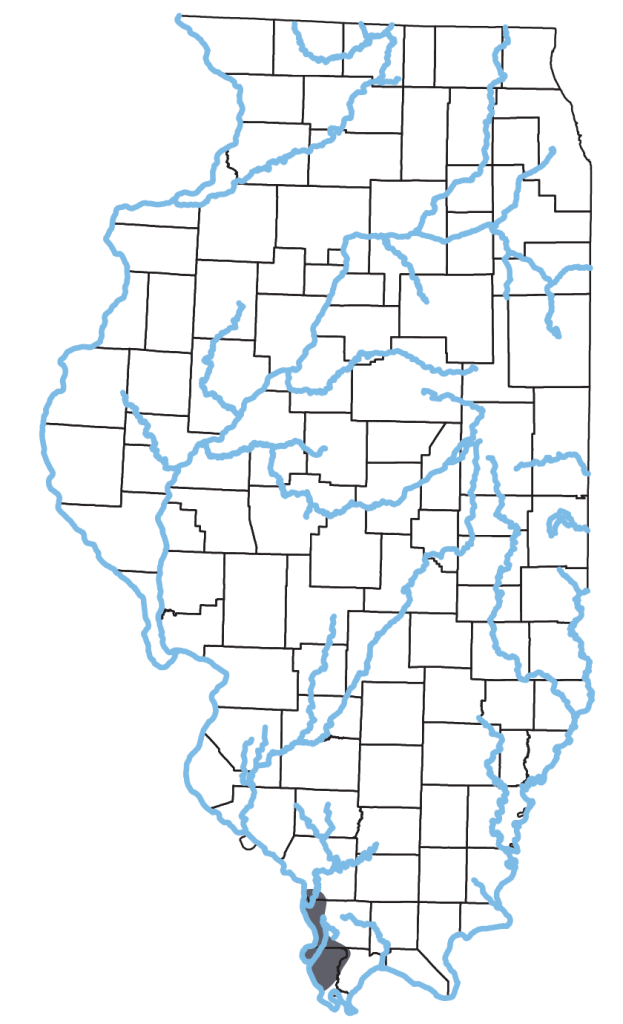Nerodia cyclopion (Dumeril, Bibron, & Dumeril, 1854)
Key Characters: Subocular scale between eye and supralabial scales; dark belly covered with pale half-moons; back scales strongly keeled; anal plate divided.
Similar Species: Diamondback Watersnake, Cottonmouth. See the Key to Snakes of Illinois for help with identification.
Subspecies: None recognized.
Description: Large (up to 100 cm TL), stout snake with greenish black or olive brown back and sides. Fifty barely visible, narrow black crossbands above vague alternating dark blotches. Belly dark brown or black with off-white half-moons. No other water snake in Illinois has the subocular scale.
Habitat: Quiet backwater sloughs and cypress-tupelo swamps of extreme southwestern counties.
Natural History: This viviparous snake mates in May and gives birth to 10-20 young in late July or August. Newborn are 25-27 cm TL. Diet mainly of fish, but also includes amphibians. Predators include other snakes and large shore birds. Water snakes are often killed by people who mistake them for cottonmouths.
Distribution Notes: Except for three specimens in the Field Museum collected by C.M. Barber in 1907 at Horseshoe Lake, Alexander County, all Illinois specimens are from LaRue-Pine Hills.
Status: Threatened in Illinois. Threats include drainage of sloughs and swamps and removal of aquatic vegetation.
Etymology: Nerodia – neros (Greek) meaning flowing, liquid; or (Greek) for Nereis, a Greek sea nymph; cyclopion – Kyklops (Greek) for ‘mythical one-eyed giant’.
Original Description: Dumeril, A.M.C., G Bibron, & A. Dumeril. 1854. Erpetologie generale ou histoire naturelle complete des reptiles. Librarie Encyclopedique de Roret, Paris. Vol. 7 (Part 1). 780 pp.
Type Specimen: Not designated.
Type Locality: “New Orleans, Louisiana”
Original Name: Tropidonotus cyclopion Dumeril, Bibron, & Dumeril, 1854
Nomenclatural History: Smith (1961) used the combination Natrix cyclopion. Misspellings include cyclopium.


